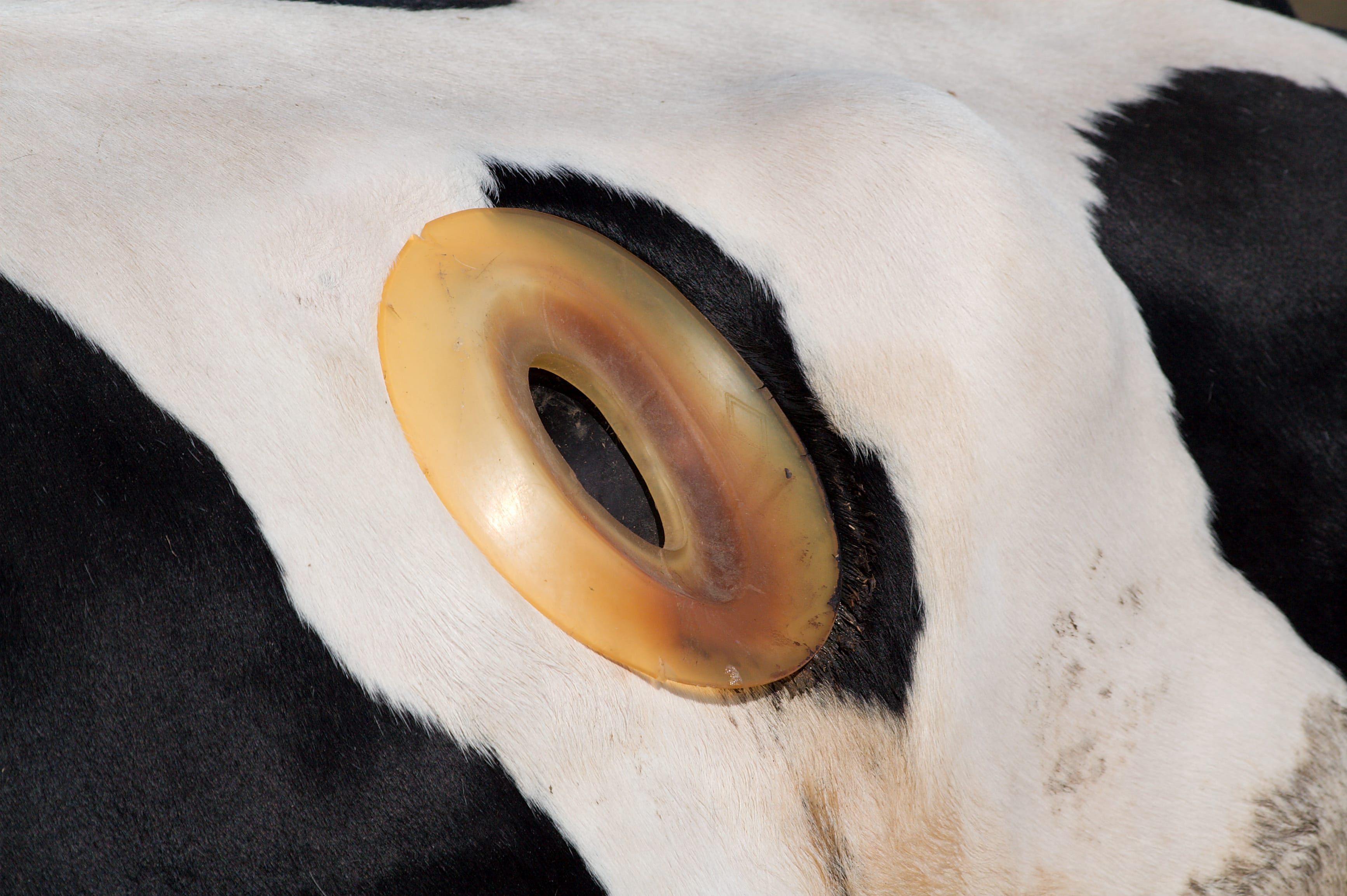
When you think of a ”porthole,” you probably picture a small round window on a ship or airplane, right? Well, prepare to be shocked: portholes are also used on cows. Yes, cows. For decades, farmers and scientists have been installing portholes — or cannulas — on cows to access their stomachs.
This practice has been ongoing for almost a century, and while it’s not commonly known to the general public, it plays a crucial role…
What exactly are cow portholes?
A cannulated cow — also called a fistulated cow — is a cow that has undergone surgery to have a special device, called a cannula, installed in its side. Its essentially a surgical opening created in the side of a cow’s stomach.
Think of it like a small, sealed ”porthole”, typically sealed with a plastic ring.
So, why would anyone do this? Mainly for research and veterinary care.
With this setup, scientists can study digestion, feed efficiency, and even how cows process different diets, all without having to repeatedly sedate or operate on the animal. Sounds pretty wild, right?
Practice dating back to the 1920s
The practice of installing portholes in cows was first documented back in 1928 by Arthur Frederick Schalk and R.S. Amadon from North Dakota Agricultural College.
Researchers originally started using portholes to study cow digestion in greater detail. By inserting a porthole, they could easily collect samples of partially digested food, gases, and microbes. This method provided insights into how cows process food and how they could be fed more efficiently.

For example, a study from 1939 using cannulated cows found that the pH level in a cow’s rumen changes throughout the day — it’s most alkaline right before feeding.
Why use portholes on cows?
Farmers and scientists use portholes on cows to study and improve the cows’ digestion and overall health.
By monitoring how cows digest different feeds, they can develop diets that enhance milk production, boost growth, and even reduce harmful emissions like methane. It’s a practice that’s aimed at making farming more sustainable and productive.
But that’s not all. Researchers claim that cows with portholes can live long, healthy lives after the initial recovery period. While the procedure is invasive and does come with risks, many scientists argue that the cows don’t suffer long-term pain and live for up to 15 years.
Before the procedure, the cow is made to fast — no food or water for 24 hours. When it’s time for surgery, the cow remains standing and awake, but a local anesthetic is used to numb the area.
A veterinarian then surgically creates a small opening in the cow’s side and inserts a rubber cannula, which acts like a porthole directly into the stomach. The whole process is done carefully to reduce stress and pain, but it’s still a highly controversial practice.
A step toward maximizing food production
The bigger goal behind the portholes is clear: better milk production and more sustainable farming.
By better understanding cow digestion, farmers can feed cows in ways that minimize the environmental impact, like reducing methane emissions, which are a significant contributor to climate change. Plus, this research could help eliminate the need for antibiotics, making milk production cleaner and more efficient.
But is it ethical?
While the practice has clear benefits for science and agriculture, it’s not without its critics. Animal rights groups, like L214 in France, argue that the procedure is invasive and unnecessary.
Some even view it as a form of exploitation, describing it as cruel and unfair to the animals involved.
”Many of them already suffer from lameness, infections, lung or heart problems. And yet, instead of stopping this cycle, we are always pushing further. It is high time to put this unfair system into question,” L214 said and posted a video of a researcher putting their hand into a porthole.
As a result, there have been calls to end the practice, and petitions are circulating in various countries to ban cow portholes for good.

People for the Ethical Treatment of Animals (PETA) has criticized the use of cow cannulation, pointing out that the surgery requires a recovery period of four to six weeks — something they argue isn’t always in the animal’s best interest.
The group argues the procedure is not just invasive, but fundamentally wrong, stating: “Cows are intelligent and sensitive animals who don’t deserve to be mutilated for any reason.”
According to PETA, “While some claim that this transfer can improve the health of cows, the procedure seems mostly to benefit the meat and dairy industries’ bottom lines — optimizing food and digestion for animals who will ultimately be exploited and slaughtered.”
Alternatives to portholes
As technology advances, there are some alternatives to using portholes for studying digestion. New lab models that simulate the cow’s digestive system are being developed.
These models mimic the rumen environment, offering insights without needing a live animal. However, many researchers believe that direct access to a live cow still provides data that lab models can’t replicate.
Portholes on display — and backlash
In some countries, porthole-equipped cows are even showcased at agricultural events. Visitors can observe these cows up close and even reach into their stomachs to see the digestion process firsthand.
These demonstrations aim to educate the public, but they’ve sparked outrage and protests, with many questioning whether such displays are necessary or simply exploitation.
In North America, some veterinary schools, large animal hospitals, and farms keep healthy cows with portholes as living donors for what’s known as a ”microbiota transplant.” In simpler terms, vets literally reach into the cow’s stomach and scoop out some of its rumen contents (full of good microbes) to give to a sick cow whose digestive system isn’t working right. The process is called transfaunation, and it’s like a gut-health reboot for cows.

But across the Atlantic, things are handled very differently. In Europe, surgically installing a porthole in a cow is widely considered unethical.
Instead, vets use a long, flexible tube with a metal filter tip — kind of like a giant straw — to draw out stomach fluid. This tool is passed down the cow’s throat into its stomach, and they can usually collect up to five liters of liquid this way. It’s less invasive, but some say not as effective.
Animal welfare vs. agricultural progress
The use of portholes on cows brings up a larger debate on animal welfare in agriculture. While proponents argue that this research helps improve animal health and sustainability, critics maintain that it prioritizes industrial gains over the well-being of the animals. The controversy isn’t likely to disappear anytime soon, especially as more people learn about the practice.
What do you think? Should we continue using portholes on cows for research, or is it time for a more ethical approach? Let us know in the comments on Facebook!
READ MORE
- Sad pup separated from cow who raised him – watch tearjerking moment they reunite again
- Cow collapses in field – when the man understands why, he refuses to leave her side





